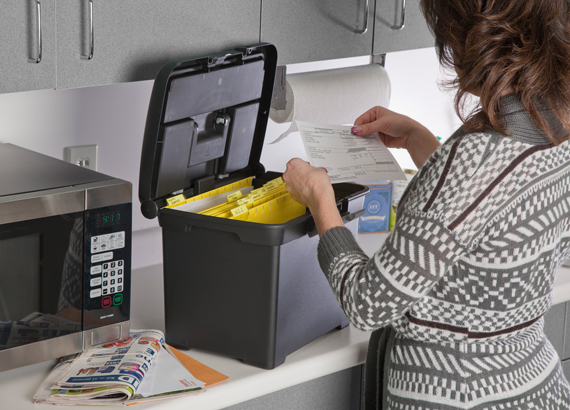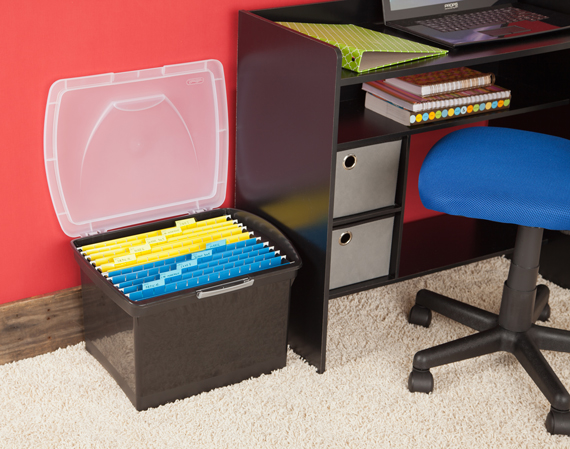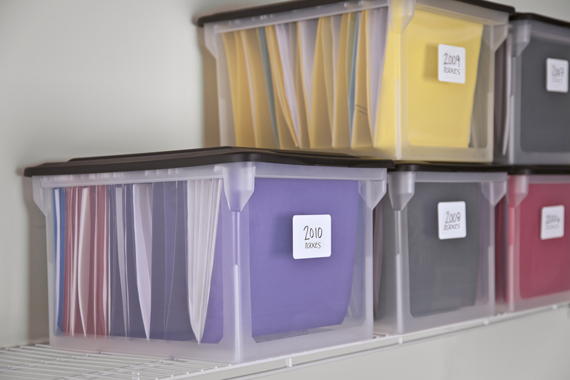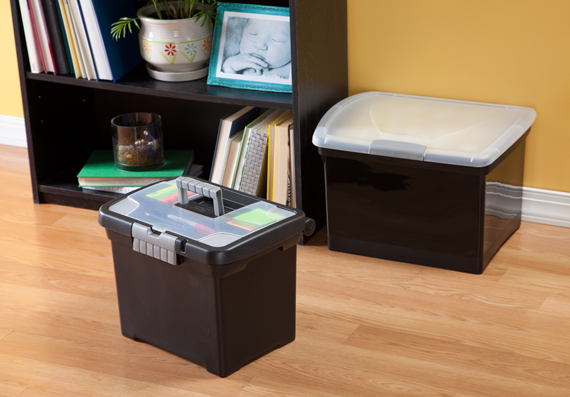By Kellie Fournier of Sterilite Corporation
Tax time can be exciting and daunting all at the same time. With a little organization and the proper tools this could be a quick and somewhat painless process. Think of all the time you can spend on doing the things you enjoy instead of agonizing over receipts! Check out our guidelines for tax-time prep:
1. Start with an easy to maintain filing system – our Portable File Box with hanging file folders and tabs is ideal for organizing the current year’s documentation.
2. Determine what the tab categories should be to easily sort and identify documents. Here are some basic suggestions that you can customize to your needs:
- W-2s
- 1099s, income and dividends
- Vehicle information
- Mortgage and bank interest statements
- Real estate tax documents
- Medical expense receipts
- Receipts for charitable donations
- Child care expenses
- Student loan documents
- Copy of last year’s tax returns

3. Place the Portable File Box in the kitchen or home office so you can file incoming tax documents and receipts quickly. This will help prevent all important information from being misplaced or thrown out.
4. Once your taxes have been filed, transfer your documents into a File Box with the same subset of hanging folders for long-term storage.
5. Update your Portable File Box for next year’s documents – now that you are a pro at filing and sorting you can improve on what was done last year!
Keep in mind, tax guidelines recommend that you keep all your tax returns as well as six years' worth of receipts in case you are audited. Start by gathering all your past returns and receipts and organize them by year. You can then opt to store them in a File Box which will help centralize these documents for future reference. File Boxes can easily be stacked, helping to maximize space in a closet or on a shelf. We recommend that labels be applied with the tax year on the outside to make locating documents even easier. This will also help you identify documents when the time comes to purge items that are dated or no longer needed.

Now, that you are organized for the tax season, don’t forget to call and book your appointment if you will be having your taxes prepared outside the home. Try and book for some time in February/early March as this will allow you to get in before the rush and receive your refund early! If you’re one of the unlucky that will need to pay the IRS, you will have a few extra weeks to determine your plan for making that extra payment you may not have expected.

By following these simple guidelines you will alleviate some of the stress in filing your taxes and eliminate clutter around your home and office. If you have a system that works well for you, let us know how you keep organized for tax season.
Happy filing and here’s to a nice fat return!



Comments